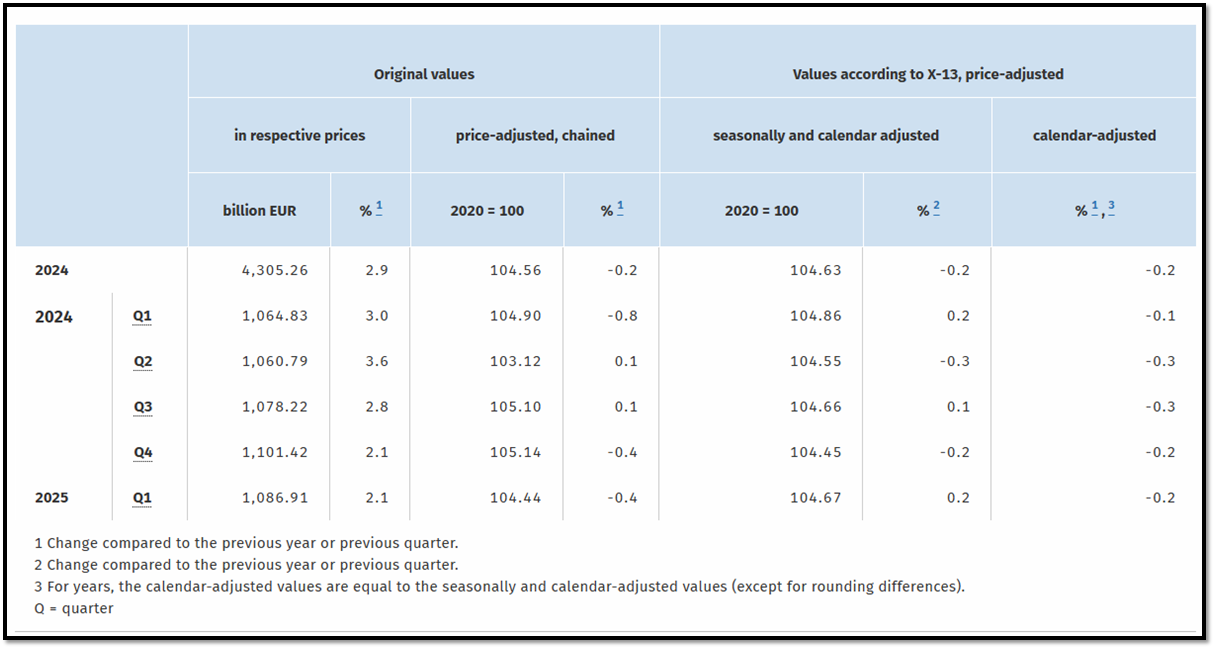Germany’s economy grew by 0.2% in the first quarter of 2025, according to preliminary figures released Friday, matching market forecasts. This modest rebound follows a 0.2% contraction in the previous quarter and signals a fragile but welcome return to growth for Europe’s largest economy.
The upturn was supported by easing inflation and lower borrowing costs, which helped lift domestic demand and business investment. Consumer and business sentiment also improved, supported by the resolution of coalition talks and the formation of a stable federal government earlier in the year. The political clarity provided a tailwind, offering reassurance to markets amid broader uncertainty.
Still, underlying challenges persist. Compared to a year ago, Germany’s gross domestic product (GDP) declined by 0.2%. This marks the seventh consecutive quarter of year-on-year contraction, highlighting the enduring impact of structural weaknesses and global economic pressures. Trade tensions, particularly stemming from shifting U.S. tariff policy, continue to weigh on sentiment and export performance.
Economists caution that while the quarterly growth is a step forward, it does not yet signal a strong or sustained recovery. Germany will need continued policy support and a more stable global backdrop to build on this early momentum.

 Bond Market Pushback Takes Center Stage
Bond Market Pushback Takes Center StageMarkets are almost fully pricing in another Federal Reserve rate cut this week, yet the US bond market continues to move in the opposite direction.
Detail Central Bank Expectations Reset the Tone (8-12 December)
Central Bank Expectations Reset the Tone (8-12 December)Traders adjusted positioning before the Federal Reserve’s December decision and evaluated fresh signals from the ECB, BoE and BOJ.
Detail Futures Stall, 10-Year Yield Pushes Above 4.1% (12.08.2025)US stock futures were flat on Monday ahead of the Fed’s meeting, with markets pricing an 88% chance of a 25 bp cut on Wednesday.
DetailThen Join Our Telegram Channel and Subscribe Our Trading Signals Newsletter for Free!
Join Us On Telegram!